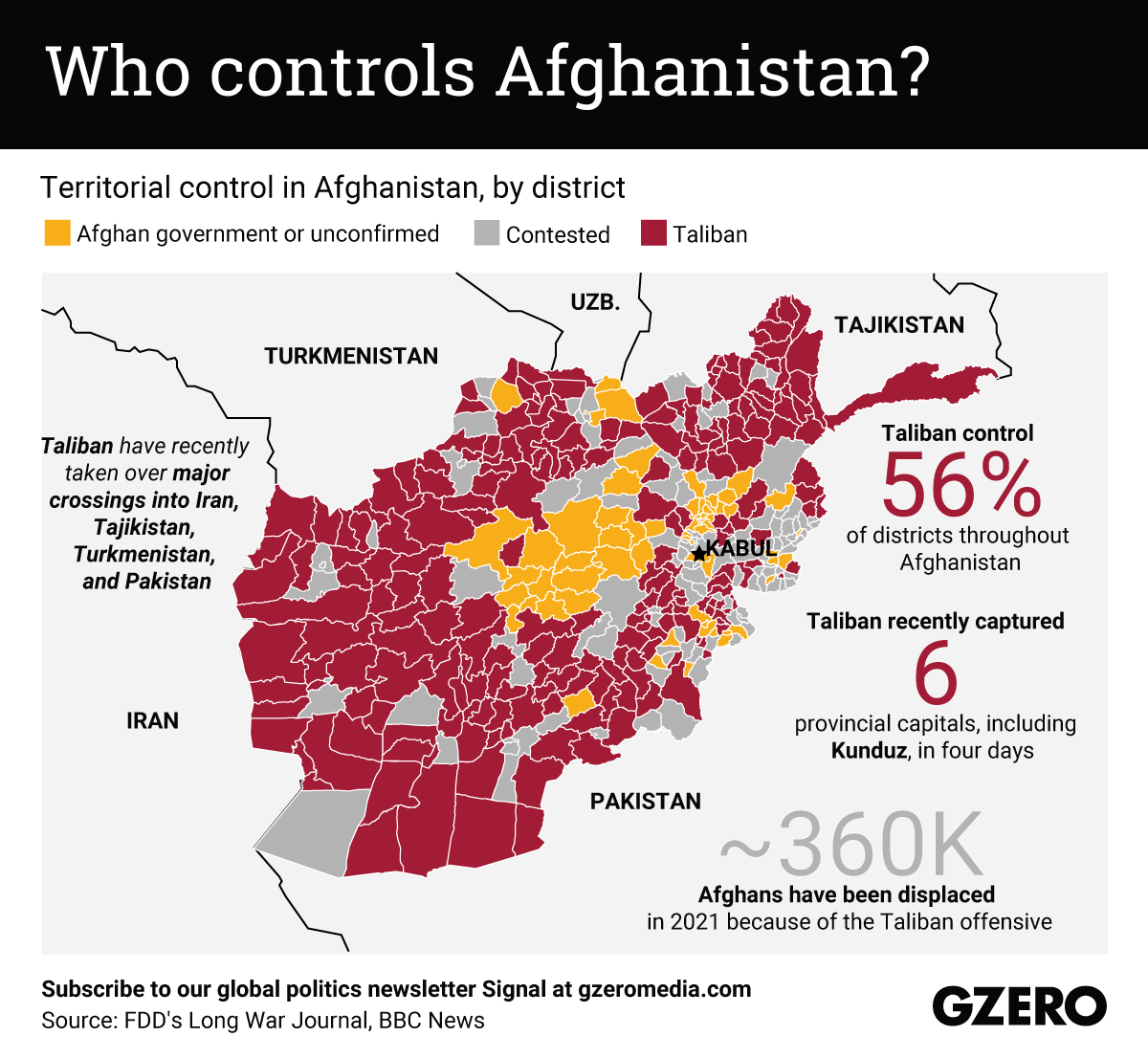August 09, 2021
The Taliban have made massive territorial gains in Afghanistan since the Biden administration announced that it would withdraw all US forces by September of this year. In many instances, Afghan security forces have abandoned their bases and handed over territory rather than confront Taliban fighters directly. Recently, Taliban militants gained control of major crossings, including the Islam Qala crossing between Afghanistan and Iran, which generates $20 million in monthly revenue for the Afghan government, as well as the critical Wesh-Chaman border crossing with Pakistan. With the US withdrawal already more than 90 percent complete, the Taliban already control more than half of all Afghan districts. So as the last few US forces prepare to leave, we take a look at who controls what in Afghanistan. Spoiler: it's a significantly different state of play from when we last mapped it out two years ago.
From Your Site Articles
- Taliban takeover embarrassing for Biden; political impact of wildfires - GZERO Media ›
- What does a Taliban takeover of Afghanistan actually mean? - GZERO Media ›
- The US can advance democracy without being the world's sheriff - GZERO Media ›
- The fallout from US Afghanistan withdrawal: a Marine's perspective - GZERO Media ›
- US Afghanistan withdrawal: a “digital Dunkirk” - GZERO Media ›
- Petraeus on the Afghanistan crisis - GZERO Media ›
More For You
- YouTube
On Ian Explains, Ian Bremmer takes a look at the growing surge in global conflict and the ripple effects of so much violence, war, and armed struggle throughout the world.
Most Popular
Think you know what's going on around the world? Here's your chance to prove it.
French President Emmanuel Macron, German Chancellor Friedrich Merz, Ukrainian President Volodymyr Zelenskiy, U.S. Special Envoy Steve Witkoff and businessman Jared Kushner, along with NATO Secretary-General Mark Rutte and otherEuropean leaders, pose for a group photo at the Chancellery in Berlin, Germany, December 15, 2025.
Kay Nietfeld/Pool via REUTERS
The European Union just pulled off something that, a year ago, seemed politically impossible: it froze $247 billion in Russian central bank assets indefinitely, stripping the Kremlin of one of its most reliable pressure points.
Big global stories. Real conversations with world leaders. Our award-winning global affairs show, GZERO World with Ian Bremmer, goes beyond the headlines on the stories that matter most. Here’s a look back at the 10 most quotable moments from this year’s episodes.
© 2025 GZERO Media. All Rights Reserved | A Eurasia Group media company.
